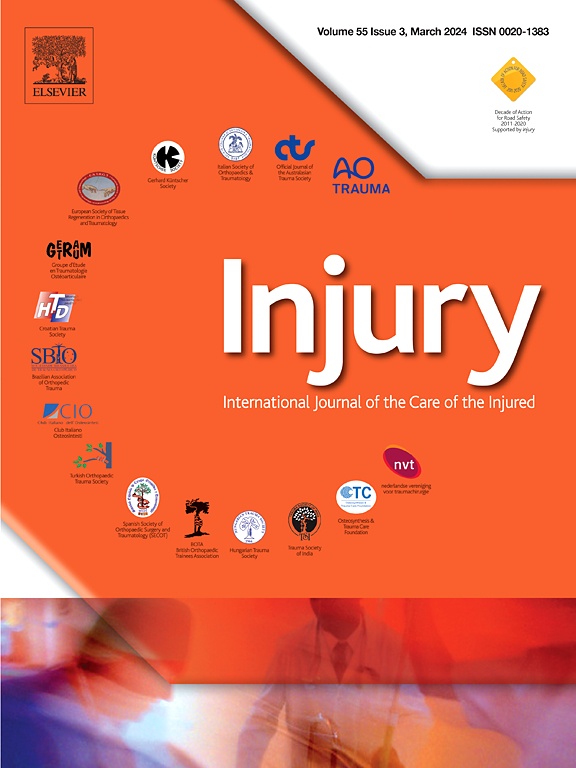
Function and radiographic outcome of carbon peek and titanium locking plates similar for DRF

Function and radiographic outcome of carbon peek and titanium locking plates similar for DRF
Comparison between Carbon-Peek volar locking plates and titanium volar locking plates in the treatment of distal radius fractures
Injury. 2017 Oct;48 Suppl 3:S24-S29Did you know you're eligible to earn 0.5 CME credits for reading this report? Click Here
Synopsis
30 patients undergoing volar plate fixation for an AO type B or C displaced fracture of the distal radius were included in this study to compare two different plates. Patients were randomized to undergo the procedure using either Carbon-Peek volar locking plates or titanium volar locking plates. Follow-up was conducted over a 12-month period and patients were evaluated for forearm range of motion, hand grip strength, key pinch strength, the Disabilities of the Arm, Shoulder, and Hand (DASH) questionnaire and a visual analog scale. Dorso-palmar and lateral x-rays were also used to assess radiographic parameters. The results of this study at 12 months indicated no significant differences in functional outcome or radiographic outcome between the two plates.
Was the allocation sequence adequately generated?
Was allocation adequately concealed?
Blinding Treatment Providers: Was knowledge of the allocated interventions adequately prevented?
Blinding Outcome Assessors: Was knowledge of the allocated interventions adequately prevented?
Blinding Patients: Was knowledge of the allocated interventions adequately prevented?
Was loss to follow-up (missing outcome data) infrequent?
Are reports of the study free of suggestion of selective outcome reporting?
Were outcomes objective, patient-important and assessed in a manner to limit bias (ie. duplicate assessors, Independent assessors)?
Was the sample size sufficiently large to assure a balance of prognosis and sufficiently large number of outcome events?
Was investigator expertise/experience with both treatment and control techniques likely the same (ie.were criteria for surgeon participation/expertise provided)?
Yes = 1
Uncertain = 0.5
Not Relevant = 0
No = 0
The Reporting Criteria Assessment evaluates the transparency with which authors report the methodological and trial characteristics of the trial within the publication. The assessment is divided into five categories which are presented below.
3/4
Randomization
2/4
Outcome Measurements
3/4
Inclusion / Exclusion
4/4
Therapy Description
4/5
Statistics
Detsky AS, Naylor CD, O'Rourke K, McGeer AJ, L'Abbé KA. J Clin Epidemiol. 1992;45:255-65
The Fragility Index is a tool that aids in the interpretation of significant findings, providing a measure of strength for a result. The Fragility Index represents the number of consecutive events that need to be added to a dichotomous outcome to make the finding no longer significant. A small number represents a weaker finding and a large number represents a stronger finding.
Why was this study needed now?
The distal radius is one of the most common bones to be fractured, particularly among older adults. Volar plating is a widely used method of fixation for these injuries. Most plates are constructed of a titanium alloy, but more recently, a plate composed of carbon fiber reinforced polyetheretherketone (CFR-PEEK) has been introduced.
What was the principal research question?
In volar plate fixation of a distal radius fracture, is there any significant difference in functional outcome or radiographic outcome between cases completed using a carbon fiber reinforced polyetheretherketone and cases completed using a titanium plate, assessed over a minimum of 12-month follow-up
What were the important findings?
- Mean DASH at final follow-up did not significantly differ between the CFR-PEEK group (15.3) and the titanium group (12.2) (p>0.05).
- Mean VAS score at final follow-up did not significantly differ between the CFR-PEEK group (3.6) and the titanium group (2.9) (p>0.05).
- Mean range of motion at final follow-up did not significantly differ between the CFR-PEEK group and the titanium group (p>0.05).
- No significant differences in radiographic parameters were recorded between groups at final follow-up.
- No complications were recorded in either group.
What should I remember most?
In volar plating of a displaced distal radius fracture, no significant differences in functional outcome or radiographic outcome were noted between plates composed of carbon fiber reinforced polyetheretherketone and titanium plates after a minimum of 1 year.
How will this affect the care of my patients?
The results of this study suggest that similar outcomes are achieved by the CFR-PEEK volar plate to that of the more standard titanium plate for fixation of displaced distal radius fractures.
Learn about our AI Driven
High Impact Search Feature
Our AI driven High Impact metric calculates the impact an article will have by considering both the publishing journal and the content of the article itself. Built using the latest advances in natural language processing, OE High Impact predicts an article’s future number of citations better than impact factor alone.
Continue



 LOGIN
LOGIN

Join the Conversation
Please Login or Join to leave comments.